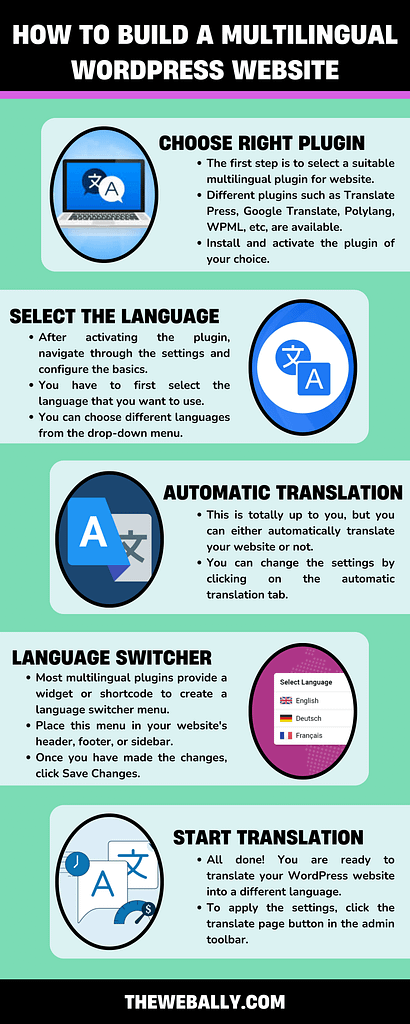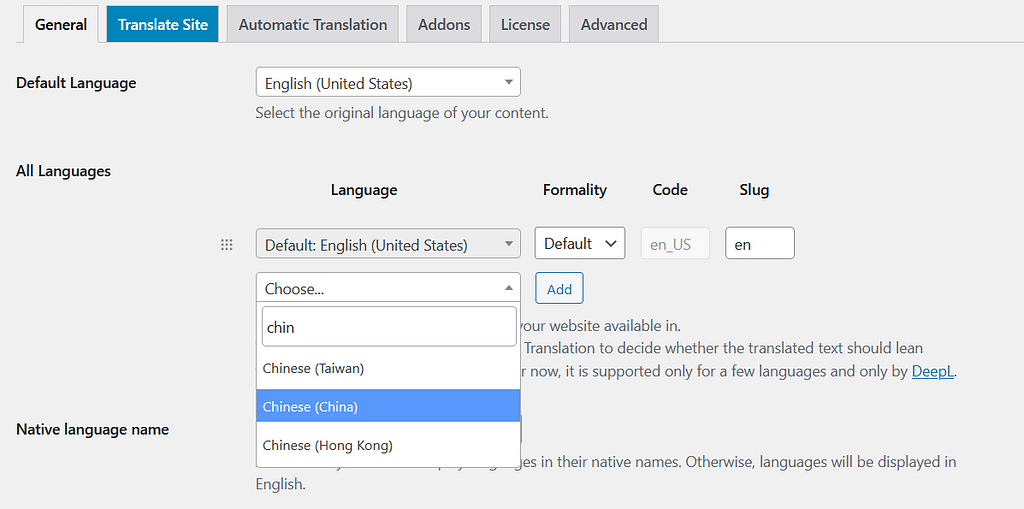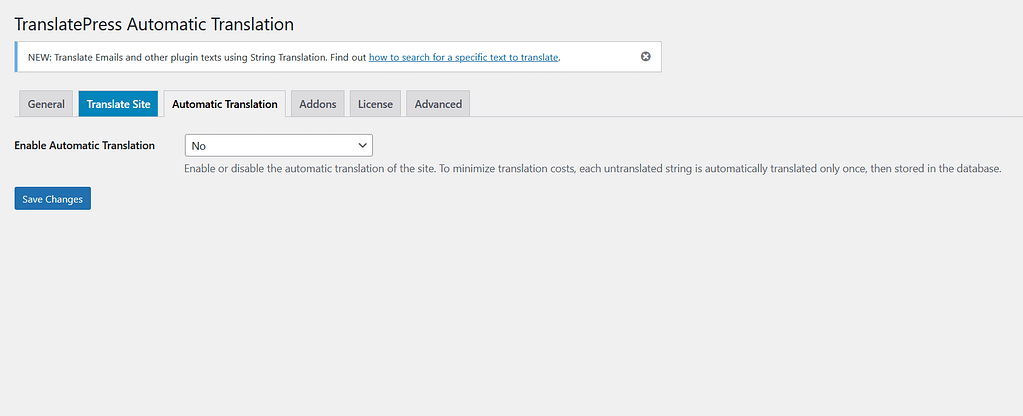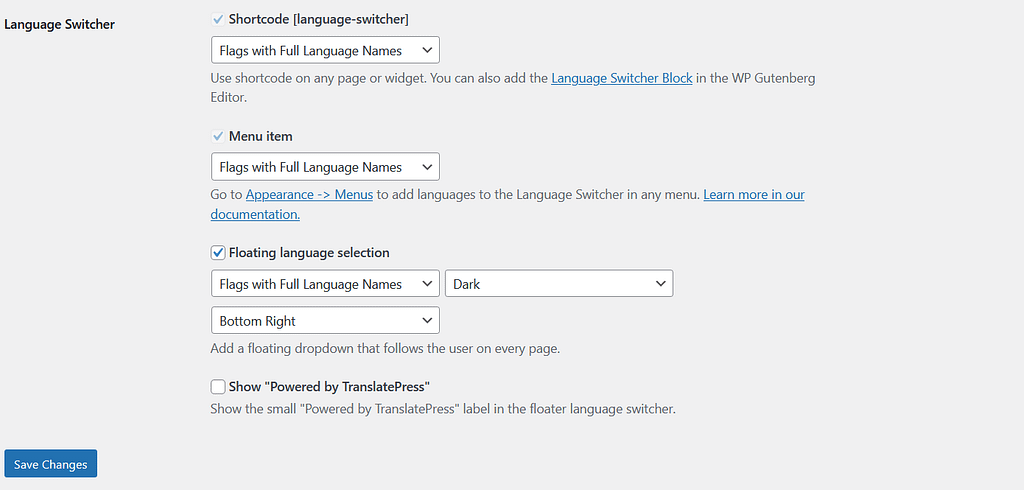In our interconnected world, reaching a global audience often requires breaking down language barriers. If you’re eager to expand your WordPress website’s reach and engage with visitors from diverse linguistic backgrounds, creating a multilingual website is the key.
This step-by-step guide will walk you through the process of transforming your WordPress site into a welcoming, multilingual space.

The foundation of a multilingual WordPress website lies in a reliable multilingual plugin. Popular choices include WPML (WordPress Multilingual), Polylang, and Weglot.
Install and activate your chosen plugin from the WordPress dashboard, ensuring compatibility with your theme.
In this guide, we’ll walk you through the entire process using the Translate Press plugin:
Once installed, navigate to the plugin settings to configure your website’s language settings. Set the default language and add additional languages you want to support. These settings will serve as the framework for your multilingual content.
For example, if your site is in English, and you want it to be in Chinese as well, you will configure it like this:

This is totally up to you, but you can either automatically translate your website or not. You can change the settings by clicking on the automatic translation tab. The plugin will use machine translation to adjust the content into a preferred language if you enable automatic translation.

Make navigation seamless for your visitors by implementing language-switching options. This can be in the form of a language switcher in your website’s header or footer. Allow users to choose their preferred language and ensure that the switch is smooth and intuitive.


All done! You are ready to translate your WordPress website into a different language. You can also use a visual interface to translate the content on your site. To apply the settings, click the translate page button in the admin toolbar.
It is pretty easy to navigate through the panel; you can select a floating switcher to change the language automatically. You will face any difficulty; it is more like a WordPress customizer.
Boost the visibility of your multilingual website by optimizing it for search engines. Ensure that each language version has its own SEO settings, including meta titles, descriptions, and language-specific keywords. This ensures that your content is effectively indexed in different languages.
If your target audience spans multiple regions with variations in language (e.g., American English vs. British English), take this into account during the translation process. Some multilingual plugins allow for regional variations, allowing you to tailor your content to specific linguistic nuances.
Before launching your multilingual WordPress website, thoroughly test each language version. Check for consistency in design, functionality, and content across all translations. Pay attention to the user experience and ensure that language switching is seamless.
For dynamic content such as user-generated comments or e-commerce product descriptions, consider integrating with translation services. This ensures that all aspects of your website, including user interactions, are accessible in multiple languages.
It is important to understand that you are creating a multilingual website to attract visitors. Hence, it is not just about translation; it is also about making context with the content. Moreover, you need to localize your content if you translate it into a different language. Keep in mind the following practices before you proceed with creating a multilingual WordPress website.
There are around 6500+ languages, and with so many cultures and languages, it is difficult to translate between the languages. Words can be defined, but they lose the context. Not every word on your website needs to be translated well into another language, and that goes for slang phrases as well. Consider both literal and cultural meanings to avoid confusion.
The main purpose of creating a multilingual website is to attract new visitors who understand a different language. Instead of using cookies to adjust the content, use different URLs for each version. This practice will also make the visitor with a different language feel more important.
Yes, you can create a website in more than one language, but you can still develop it in some languages. It is not an efficient way to develop your website that matches your target audience.
Creating a multilingual WordPress website opens doors to a more inclusive and diverse audience.
By following these steps, you can seamlessly implement multilingual features, providing a user-friendly experience for visitors regardless of their language.
Break down barriers, expand your reach, and create a global online presence with a multilingual WordPress website. If you need help in the website design process, professionals from The Web Ally are always here to help you.
Self-service covers every aspect of life these days, but we still believe in the power of having someone to talk to. Maybe it's to bounce off ideas and explore new opportunities. Maybe it's just to say hello.
In any case, we will only use your contact details to get in touch with you regarding your enquiry - and nothing else!